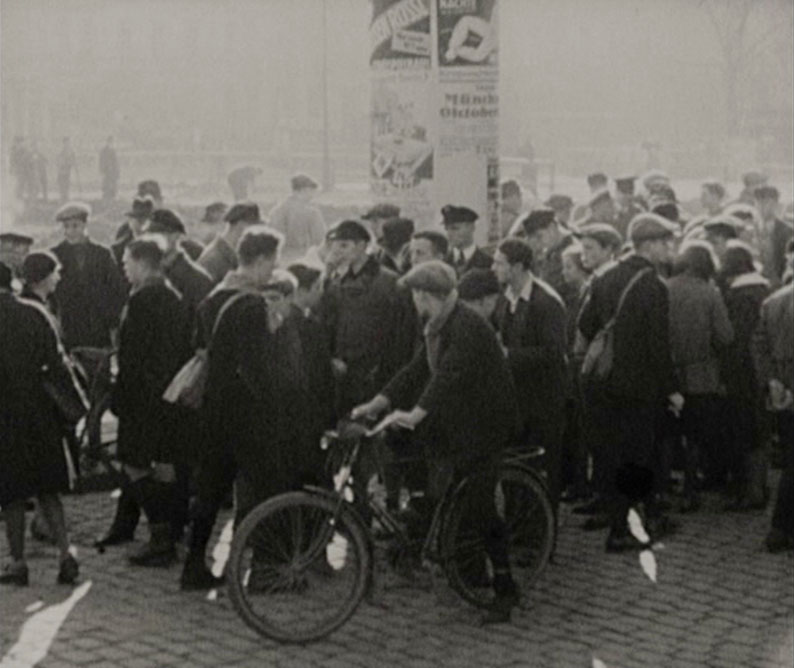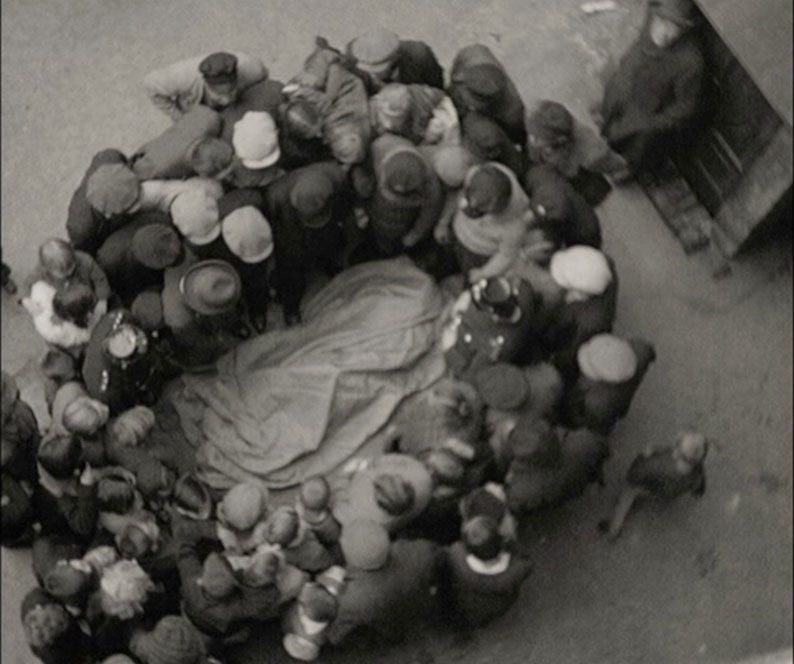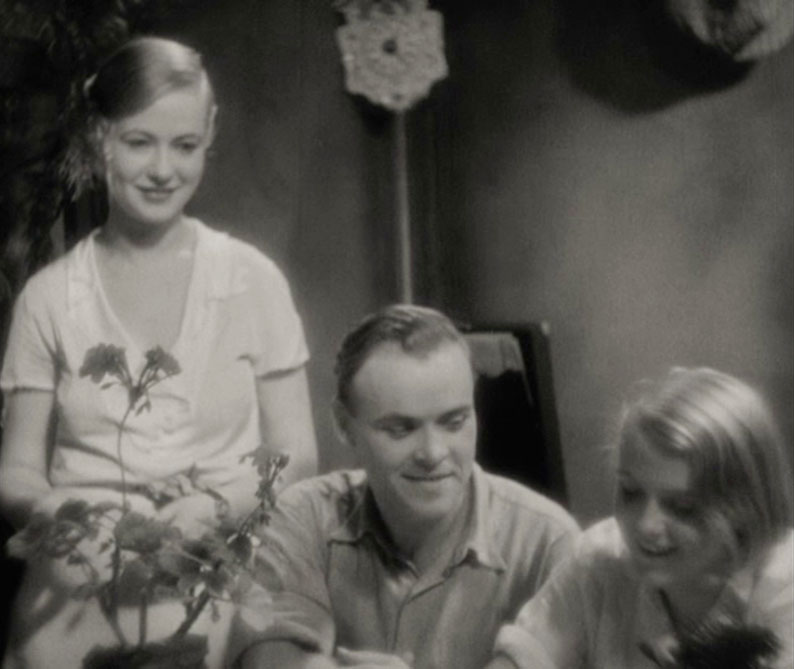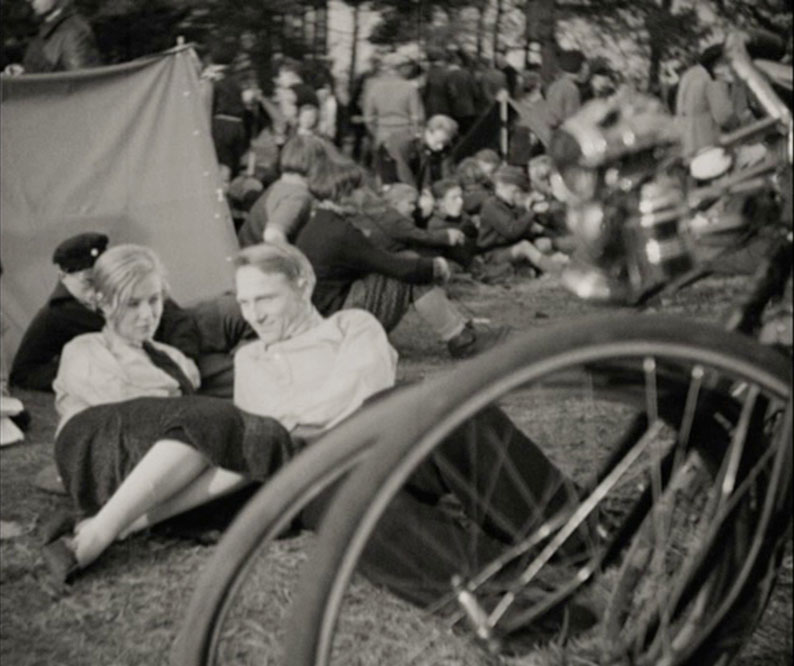|
Kuhle Wampe, or Who Owns the World? ( Kuhle Wampe, oder Wem gehört die Welt?), made in 1932, is one of the fruits of the Weimar era of German cinema, which produced some distinctly provocative films to say the least. It was subject to censorship at the time, and was banned by the Nazis in 1933. While it has been restored, some scenes cut by the censor no longer exist.
Part of the reason for the film’s interest is the involvement of Bertolt Brecht, who cowrote it with Ernst Ottwalt. Brecht also directed, uncredited, the final scene, though the rest of the film is the work of Slatan Dudow. One of the foremost playwrights of the twentieth century, Brecht (1998-1956) pioneered a type of theatre in which our immersion and absorption into the characters and events was not the intention. Brecht intended us to stand back and maintain a critical distance, and to draw their own conclusions – which, given Brecht’s politics, were left-wing ones. He did this by using the “alienation effect” (verfremdungseffekt): captions, songs breaking up the action, all means of reminding the audience that they were not watching reality but instead a play – but Brecht’s dramatic gifts made the plays compelling all the same. While the stage was his primary career, Brecht was involved in the cinema, not least in adaptations of his plays, and Kuhle Wampe reflects his concerns in its very structure.

That structure is in four parts, two of them introduced by captions. We’re in early 1930s Berlin. Newspaper headlines tell us that we are in a time of high unemployment, depicted by scores of young men (and almost all men) crossing the city by bicycle in order to find work. There is no dialogue, reminding us that we are only two or three years out of the silent era. Then one young man kills himself. His family, the Bönikes, are evicted and are moved to Kuhle Wampe, a camp outside Berlin. The rest of the film centres on the man’s sister Anni (Hertha Thiele), the only one of her family still in work. She becomes pregnant by her boyfriend Fritz (Ernst Busch). The remaining parts of the film are a sports festival and the train journey home, separated from each other by music and shots of the contemporary architecture. Elswhere, the montage experiments of Soviet directors, Eisenstein and Vertov most particularly, make their influence felt.
While Dudow is credited as director and Brecht as co-writer, Kuhle Wampe was a collaborative production from the outset, with the work of Hans Eisler the score composer being vital. Another vital participant was the production manager, Georg Höllering, of whom more later. The film was shot in 1931 and completed in 1932. However, the film had censorship problems from the outset, with the treatment of Anni’s extra-marital pregnancy, at the possibility of abortion, being a particular difficulty. (By the time we get to the film’s third section, we can assume that she has indeed had that illegal abortion.) Then, as the Nazis rose to power, they banned the film in its entirety. However, the film did make its way out of its native country – Dudow himself smuggled one copy out. By February 1934, the Monthly Film Bulletin notes that the film was available for private booking for film societies. It wasn’t submitted to the British Board of Film Censors (as was) until 1978, when it was reissued, and played for much of its run at the Academy Cinema in Oxford Street, London, a cinema run from 1944 until his death in 1980 by... Georg Höllering, or Hoellering as he’d anglicised his surname by then. Of the cast, Hertha Thiele is known as well for her lead role in Mädchen in Uniform, made the year before. She died in 1984. Bulgarian-born Slatan Dudow, was expelled from Germany by the Nazis and returned to the country after the War, and continued to work. He died in a car crash in 1963, aged sixty.
The BFI's release of Kuhle Wampe is dual-format, including one Blu-ray disc and a DVD. The film was given an A certificate in UK cinemas in 1978, and it is now a PG. The checkdisc supplied had "Blu-ray disc" printed on its label but turned out to be a PAL DVD. Therefore, comments about audio and visuals refer to that version only, and running times quoted may be subject to PAL speed-up.

The film was shot in 35mm black and white and the Blu-ray transfer is in the intended early-talkie ratio of 1.19:1. The film was restored in 2K using a 35mm nitrate print held by the BFI, with materials held in Switzerland, a nitrate print of a French-language version and a duplicate negative of the German version. The censored scenes could not be restored. Given the film’s troubled history, you do have to make allowances for the condition it’s in, quite soft and displaying a fair amount of damage, including some heavy scratching in parts.
The soundtrack is the original German, with optional English subtitles available. Given that this is an early talkie, you have to take account of a lower dynamic range (all middle, not much top or bottom end) than you might expect in a later film, but it’s clear and balanced well with Eisler’s music score.
Commentary by Adrian Martin
Newly recorded for this release, this commentary is well-paced (given the shorter than usual running time) and very informative, particularly in discussing the film’s influences and Dudow and Brecht’s intentions while making it, in particular the four-part structure Brecht had provided.
Introduction and Q & A by Andrew Hoellering
Recorded for the 1999 BFI VHS release of Kuhle Wampe, the son of the film’s production manager talks about his father’s involvement. He also discusses Hoellering senior’s arrival in the UK in 1936, a copy of his 1936 Hungarian-shot film Hortobágy. Interned as an enemy alien during the War, Hoellering’s filmmaking abilities enabled him to make several short films for various ministries, and after the War, the 1951 film of T.S. Eliot’s Murder in the Cathedral. Hoellering junior discusses Brecht’s contributions to Kuhle Wampe in similar terms to the way that Martin does, including a look at Brecht’s trademark irony. This piece was based on a presentation that Hoellering had given in 1988 and is in two parts: the presentation itself (36:04) and questions from the audience, presented as onscreen text as Hoellering waits to answer (14:00).

The remaining items on the disc are short films which have nothing specifically to do with Kuhle Wampe itself, but as often on a BFI release are archival items which do help to illuminate the themes of the main feature.
Bread (11:43)
Made in 1934 on 16mm, this is in fact silent (a music score by Rich Edwards) has been provided. It was made by the Kino Production Group in protest against social inequality, in its story of a man jailed for stealing bread. It ends with footage of the 1934 Hunger March, one of several which took place between 1922 and 1936.
Beyond This Open Road (10:15)
Again from 1934, again shot without sound (the original music score is now lost, so Rich Edwards provides a new one). Directed and shot by B. Vivian Braun (male) with the assistance of Irene Nicholson, it depicts the weekend as a necessary break in workers’ lives, a time to go into the country and take the open road. It was shot on a hand camera, with 1500 feet of short ends providing the 1000 feet of finished film.
Housing Problems (14:57)
Made a year later by Arthur Elton and Edgar H. Anstey, this does have sound and uses it to give voice to people living in houses which are, frankly entirely unfit for purpose, and they say why in interviews direct to camera. People are being rehoused, but it is a long slow process. The new homes would have gas supplies, for heating, lighting and cooking – which explains the involvement of the British Commercial Gas Association in the making of this film.
Eastern Valley (16:14)
On to 1937 and one of the mining valleys of South Wales, and a portrait of a co-operative farm housing some four hundred unemployed men. This was conducted as something of a social experiment, but it appears to have been a successful one.
Booklet
The BFI’s booklet is available in the first pressing only and runs to twenty-four pages. The first article is by Martin Koerber and covers the film’s making, again with emphasis on Brecht’s contributions, and the film’s afterlife and how it might have been lost forever in the wake of its banning in Germany. The booklet continues with a reprint of Jill Forbes’s review from the July 1978 Monthly Film Bulletin, on the event of the film’s reissue.

The booklet continues with film credits and credits for the extra features – though oddly (in this PDF copy at least) – no notes on the four short films. However, these are covered in “Distressed Areas” by Henry K. Miller, looking at alternative venues for feature film showing – often those deemed uncommercial or (at the time) unlikely to survive the censor intact. The Film Society was one of these, showing its films on Sunday afternoons in West End cinemas to members only, eight times a year. On 11 December 1932, at the now-defunct Tivoli on The Strand, it showed Kuhle Wampe and the programme notes played down the political content.
Miller then goes on to talk about the short films in the set, beginning with Bread, made on and distributed in 16mm, most likely as a supporting short by Kino, an organisation set up to make available Soviet films then banned by the censor, making use of the loophole that members-only cinema clubs did not need to have their films passed by the BBFC – and so the likes of Battleship Potemkin and October became available in the UK. Beyond This Open Road was another Film Society presentation, in 1934 and it appears to have had a mixed reaction, its extolling of cinema as an art rather than a means of political expression (or both) being out of step with its time. Housing Problems was another Film Society screening, but was always intended to reach a wider audience. Finally, Miller looks at Eastern Valley, not itself a Film Society presentation but had had a showing at Buckingham Palace before its premiere.
Kuhle Wampe was made towards the end of the Weimar era, and is more overtly political than many of the other films of its era, no doubt much to do with the participation of Bertolt Brecht. Inevitably compromised by its circumstances – the fact that it survives at all is to be celebrated, though it was never quite lost – it is well presented on this BFI release.
|